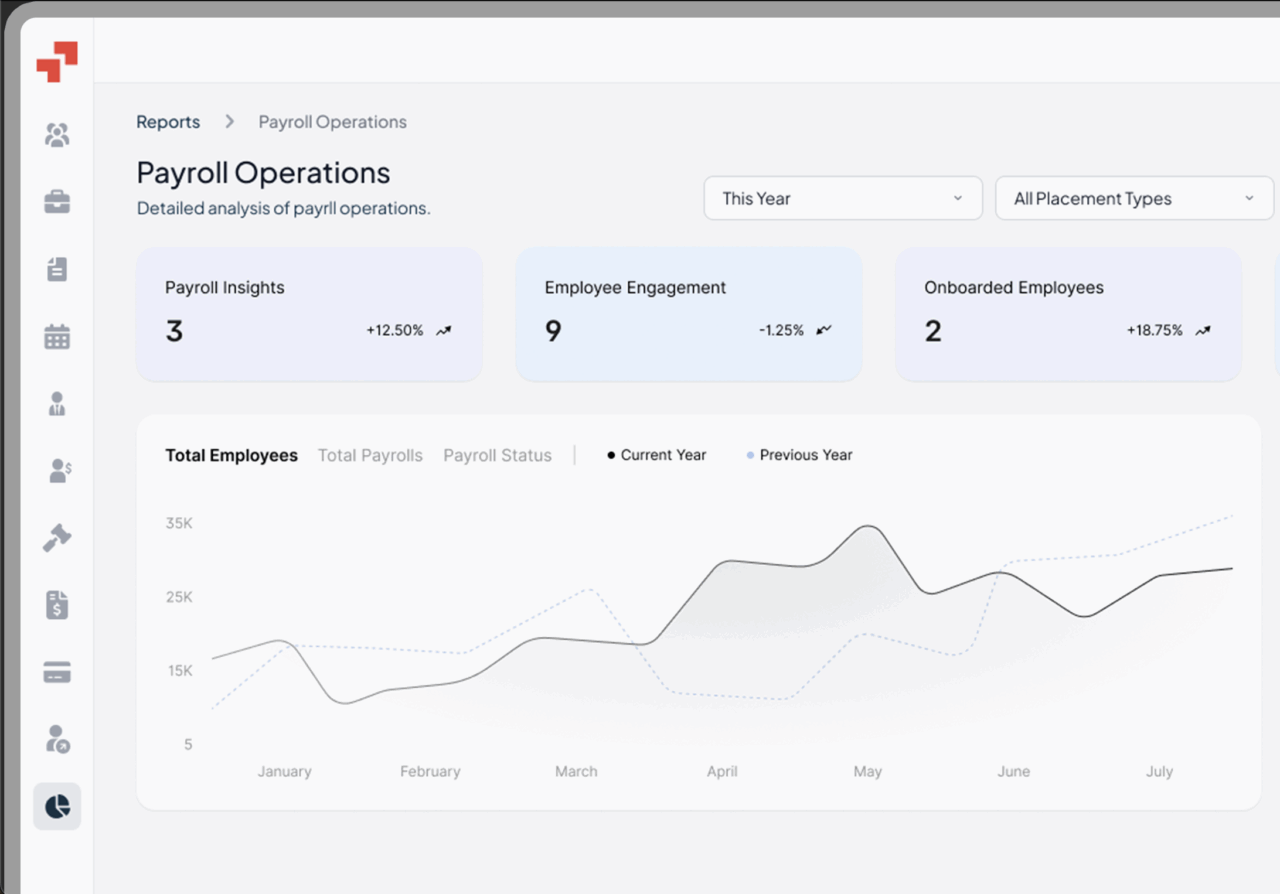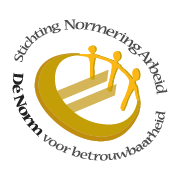Global Workforce GlossaryEmployee Wellness Program
Related Terms
Employee Assistance Program (EAP)
Accessibility Policy
Corporate Social Responsibility (CSR) Manager
HR Generalist
People Operations Specialist
In the modern workplace, an employee wellness program isn’t just an HR initiative—it’s a vital business strategy. Companies that invest in employee health and happiness see measurable gains in productivity, morale, and retention. A well-designed wellness program promotes physical, mental, and emotional well-being while enhancing employee engagement and aligning with business goals and culture. Here’s everything leaders need to know about creating and managing impactful wellness initiatives
Table of Contents
- What is co-employment?
- What are co-employment laws?
- Why is co-employment a risk?
- What are co-employment rules
- Co-employment do’s and don’ts
- How does co-employment work?
- What is the difference between co-employment and joint employment?
- Co-employment vs PEO
- Co-employment vs employee leasing
- Is co-op considered a full-time employee?
- Is it illegal to work for two jobs in the same industry?
- Co-employment examples
- Practical Case Study Example
- PamGro and Co-employment: Your Global Partner
What is an Employee Wellness Program?
An employee wellness program is a structured initiative that helps employees maintain and improve their health and wellness through preventive care, education, and supportive activities.
It focuses on fostering healthier habits and encourages employees to adopt healthy behaviors that reduce risks of illness, improve morale, and enhance overall quality of life. These programs also promote healthy lifestyles among employees and their families, extending their benefits beyond the workplace.
Typical workplace wellness programs include health screenings, stress-management workshops, fitness classes, nutrition education, and incentive programs. Health screenings provide early detection of health issues and promote preventive health measures. Biometric screenings, in particular, are used for early detection of health risks in employees. They empower employees to make better health choices while helping employers reduce absenteeism and healthcare costs. In today’s distributed workforce, digital wellness platforms make it possible to reach employees across locations and time zones seamlessly.
How to Create an Employee Wellness Program
Building a wellness program requires planning, leadership support, and measurable goals.
Steps to create an effective wellness program:
- Assess employee needs – Use surveys or health assessments to identify key concerns such as stress, burnout, or poor fitness habits.
- Set clear objectives – Define outcomes like improved participation rates or reduced sick days.
- Design inclusive initiatives – Blend physical, mental, and financial wellness options suitable for diverse teams. Inclusivity in wellness programs ensures all employees can participate and benefit, fostering a sense of belonging and equity.
- Communicate consistently – Market the program through internal channels and highlight success stories.
- Offer incentives – Reward participation through points, reimbursements, or recognition.
- Evaluate and refine – Use data analytics to measure engagement, ROI, and satisfaction, adjusting regularly. To effectively implement a wellness program, align it with employees’ specific needs and secure leadership buy-in. Implementing a dedicated team can further enhance the effectiveness of wellness program initiatives.
A thoughtful wellness program aligns with organizational culture and integrates into the company’s benefits strategy for long-term impact.
What is the Goal of an Employee Wellness Program?
The goal of an employee wellness program is to promote healthy behaviors that enhance physical and mental well-being while reducing health-related costs.
It aims to create a workplace where employees thrive—both personally and professionally. From lowering stress levels to improving nutrition, wellness programs strengthen engagement and build resilience. Mental health support is essential for employee resilience and emotional stability, helping them navigate challenges effectively. Healthy employees are generally more productive, which contributes to organizational success. Organizations also use them to reduce absenteeism, increase productivity, and boost retention. Over time, healthier employees contribute to a stronger company culture and better overall performance.
How Does an Employee Wellness Program Work?
Employee wellness programs combine education, motivation, and support to help employees lead healthier lifestyles.
They typically include elements such as:
- Preventive care: health assessments, screenings, vaccinations
- Lifestyle initiatives: fitness challenges, nutrition coaching, mindfulness sessions
- Behavioral support: one-on-one counseling, group workshops, digital wellness platforms
Employees participate voluntarily or through company-wide campaigns. Data from participation rates and surveys guide HR teams in refining program design. When integrated with benefits such as health insurance or EAPs, wellness programs create a seamless employee experience that boosts engagement and well-being.
Benefits of an Employee Wellness Program
A well-executed wellness program delivers tangible and intangible benefits.
- Reduced healthcare costs: Studies show companies can save up to $3.27 for every $1 spent on wellness initiatives.
- Increased productivity: Healthy employees are more focused, energetic, and efficient.
- Better morale: Recognition and support enhance satisfaction and loyalty.
- Lower absenteeism: Wellness initiatives help reduce sick days and stress-related absences.
- Improved retention: Employees are more likely to stay with organizations that prioritize their health.
- Stronger employer brand: Wellness initiatives showcase a company’s genuine care for its workforce, attracting top talent globally.
When paired with EOR and HR solutions like PamGro’s global workforce services, wellness programs can easily be extended across international teams.
What Should a Wellness Program Include?
A successful employee wellness program should be holistic, addressing multiple dimensions of health.
Key components include:
- Physical health initiatives: gym memberships, on-site fitness sessions, walking challenges
- Mental wellness support: stress-management workshops, meditation, counseling sessions
- Nutritional programs: healthy food options, diet coaching, hydration challenges
- Preventive care: medical checkups, vaccinations, and screenings
- Financial wellness tools: budgeting workshops, savings education. Financial wellness programs help employees manage financial stress and make informed decisions, contributing to their overall well-being.
- Flexibility and work-life balance: hybrid schedules, paid wellness days, and flexible work options to improve work-life balance and reduce burnout
- Incentives and rewards: recognition, wellness points, or discounts
- Healthy food options: Offering free healthy food supports employees’ physical health and mental well-being.
Incorporating employee feedback ensures participation remains high and the program remains relevant over time. Establishing a wellness committee from various departments increases employee buy-in and reflects the broader organization’s needs. Regular employee feedback helps in making wellness programs more relevant and effective.
What Are the Types of Employee Wellness Programs?
There are several types of employee wellness programs, often categorized by focus area or delivery style:
- Physical wellness programs – fitness classes, yoga, sports clubs
- Mental wellness programs – therapy support, mindfulness apps, resilience training
- Financial wellness programs – debt management, retirement planning
- Social wellness programs – team outings, volunteering, peer recognition
- Holistic or hybrid programs – combine all aspects through digital or on-site experiences
Programs may also differ by delivery: onsite, remote, or hybrid. Also, successful wellness initiatives focus on both individual and organizational changes.
Why Is Employee Wellness Important in the Workplace?
Employee wellness is essential because it drives long-term productivity, engagement, and job satisfaction. A healthy workforce performs better, takes fewer sick days, and contributes to a positive workplace culture, ultimately helping to lower health care costs .
Moreover, wellness initiatives demonstrate corporate responsibility and empathy—two traits modern employees highly value. By supporting employees’ physical and mental health, companies also reduce healthcare expenses and mitigate burnout risks. Wellness programs are particularly valuable in distributed or international teams where maintaining engagement remotely can be challenging.
How Can Employers Encourage Employee Participation in Wellness Programs?
Encouraging participation requires creativity, communication, and leadership involvement.
Effective engagement strategies include:
- Making participation easy through apps or online dashboards
- Offering incentives like wellness stipends, prizes, or paid time off
- Promoting team-based challenges that foster friendly competition
- Showcasing leadership participation for credibility
- Gathering feedback regularly to adapt programs to evolving needs
When employees see leaders prioritize wellness, they follow suit. Employers can also embed wellness goals into performance reviews and recognition systems to normalize participation across the organization.
Employee Wellness Program vs. Employee Assistance Program (EAP)
While both initiatives aim to improve employee well-being and combat poor health behaviors , they serve different purposes.
An employee wellness program focuses on prevention and lifestyle enhancement—helping employees build healthy habits and avoid future health risks. It’s proactive. Smoking cessation programs provide employees with tools and support to quit smoking.
An Employee Assistance Program (EAP), on the other hand, provides reactive support. It offers confidential counselling for personal, mental health, or substance abuse issues. EAPs are designed to help employees cope with crises.
Together, EAPs and wellness programs create a comprehensive well-being ecosystem. Companies that combine both see higher engagement and reduced turnover.
What is the Average Cost per Employee for a Wellness Program?
The cost of a comprehensive wellness offerings program depends on its scope and features.
- Basic programs: $3–$7 per employee per month, covering online tools or educational content.
- Comprehensive programs: $150–$1,200 annually, including health screenings, coaching, and incentives.
- Global wellness initiatives: average around $742 per employee per year.
While costs vary, research shows a strong ROI for companies that implement consistent, data-driven wellness efforts—often yielding savings in healthcare and productivity gains.
Employee Wellness Program Examples
Here are a few practical employee wellness program ideas, including promoting healthy eating :
- Step challenges with leaderboards and small prizes
- Virtual fitness classes accessible globally
- Healthy meal programs and nutrition workshops
- Mindfulness and meditation sessions
- Health fairs or biometric screenings
- Financial literacy seminars
- “Digital detox” days or flexible work hours
For example, a global SaaS firm might host monthly wellness challenges combining fitness tracking, nutrition logs, health coaching and mental health webinars. Participants earn wellness points redeemable for gift cards or extra days off. These small but consistent initiatives help build camaraderie and well-being across borders.
Practical Case Example
Case Study: FinEdge Global – A Remote-First Expansion
FinEdge Global, a fintech firm operating across the US, India, and Singapore, noticed rising burnout and absenteeism among remote teams. HR launched a comprehensive employee wellness program to support both physical health and mental health resources.
The initiative began with a global health survey to understand key stressors. Based on results, the company rolled out weekly yoga sessions, bi-monthly mindfulness workshops, and a virtual fitness reimbursement policy. They also added financial wellness webinars and personalized nutrition coaching.
After nine months:
- Absenteeism dropped by 14%
- Engagement scores improved by 10 points
- Employee satisfaction rose notably among remote workers
- Healthcare claims stabilized despite workforce growth
The company credited its success to leadership endorsement, flexible participation, and global accessibility—an approach easily scalable through PamGro’s EOR and HR frameworks.
PamGro : Your Trusted Partner for Global Expansion
Expanding globally means caring for your team’s well-being wherever they work. At PamGro, we help companies hire, manage, and support international employees compliantly through our Employer of Record (EOR) solutions.
By integrating wellness initiatives into global HR operations, PamGro enables you to deliver consistent health, benefits, and engagement experiences worldwide—without managing multiple local vendors. Whether it’s onboarding, payroll, or wellness integration, PamGro ensures your global workforce stays compliant, connected, and cared for.
Empower your people. Expand globally. Partner with PamGro today.
Hire the Best Talent, Anywhere






